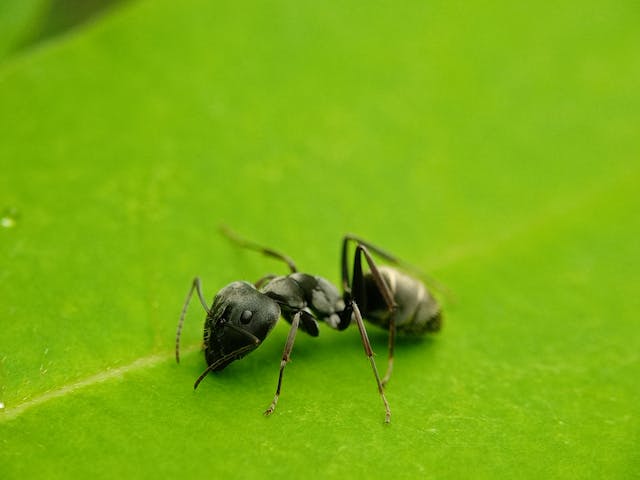Introduction: Understanding the Camponotus Habitat
The world of ants is fascinating, with Camponotus species standing out for their unique habitats and behaviors. Known for their adaptability and diverse environments, Camponotus ants—commonly referred to as carpenter ants—are a subject of intrigue among entomologists and hobbyists alike. This ant Camponotus habitat guide offers a deep dive into their preferred conditions, housing needs, and survival strategies, providing readers with essential insights to care for these remarkable creatures effectively.
From the towering forests where Camponotus gigas roam to the humid environments favored by Camponotus irritans, understanding their habitat is critical. This guide will explore their native environments, their dietary preferences, and how to replicate these conditions in captivity. Whether you’re a seasoned ant keeper or a beginner, this comprehensive resource will equip you with the knowledge to create the perfect habitat.
Join us as we delve into the intricacies of Camponotus ants, covering everything from the basics of their natural settings to advanced tips for keeping them thriving. The ant Camponotus habitat guide is your go-to resource for fostering these captivating creatures.
Natural Habitats of Camponotus Ants
Understanding Camponotus Distribution
Camponotus ants are found worldwide, from tropical rainforests to arid deserts. Each species has adapted to its environment, making them one of the most versatile genera in the ant world. For instance, Camponotus floridanus thrives in warm, humid climates, while Camponotus maculatus is better suited to arid conditions.
Camponotus Gigas in Rainforests
One of the largest ant species, Camponotus gigas, inhabits the dense rainforests of Southeast Asia. These ants prefer moist, shaded environments with plenty of decaying wood for nesting. Their colonies often stretch across large territories, making their habitat requirements extensive.
Camponotus Irritans in Tropical Areas
Native to tropical regions, Camponotus irritans are known for their resilience in humid climates. These ants build their nests in trees, thriving in environments rich in organic material.
Camponotus Japonicus in Temperate Zones
The temperate forests of East Asia are home to Camponotus japonicus. These ants favor cooler climates and are often found nesting in logs or underground, away from excessive sunlight.
Creating an Ideal Captive Habitat
Selecting the Right Environment
Replicating a natural habitat is crucial when creating a home for Camponotus ants. The ant Camponotus habitat guide emphasizes understanding the specific needs of the species you’re housing. For example, Camponotus floridanus requires high humidity, while Camponotus maculatus needs a dry environment.
Choosing the Perfect Nest
Acrylic nests, plaster nests, and natural wood setups are popular choices for Camponotus ants. Acrylic nests are particularly useful for observation, while plaster nests maintain humidity well, making them suitable for species like Camponotus floridanus.
Temperature and Humidity Control
Maintaining optimal temperature and humidity levels is essential. Most Camponotus species thrive at temperatures between 75°F and 85°F, with humidity ranging from 50% to 70%, depending on the species.
Lighting Considerations
Camponotus ants are sensitive to light. While species like Camponotus gigas prefer shaded environments, others, such as Camponotus japonicus, can tolerate moderate light levels. Always provide a dark, secure nesting area to mimic their natural conditions.
Diet and Nutrition for Camponotus Ants
Protein-Rich Diet
Protein is a staple for Camponotus ants, especially during brood development. Insects like mealworms and crickets are excellent protein sources. For larger species like Camponotus gigas, larger prey items can be offered.
Sugars for Energy
Sugars are equally important, providing the energy these ants need for their daily activities. A mixture of honey and water is a simple yet effective sugar source for species like Camponotus floridanus.
Hydration Needs
Water is essential for all Camponotus species. Provide a constant water source to ensure their hydration needs are met. For tropical species like Camponotus irritans, additional water can help maintain humidity.
Supplements and Specialized Foods
Specialized ant diets are available in the market, catering to the nutritional needs of different Camponotus species. These supplements can enhance their overall health and colony growth.
Behavior and Social Structure
Colony Dynamics
Camponotus ants are highly social, with colonies comprising queens, workers, and sometimes males. Understanding their social structure is key to maintaining a thriving colony.
Roles Within the Colony
Workers are divided into minor and major castes, each with specific roles. For instance, the majors of Camponotus japonicus are responsible for defense, while the minors focus on foraging and brood care.
Communication and Cooperation
Camponotus ants use pheromones and touch to communicate. Observing these interactions can provide valuable insights into their behavior, making the ant Camponotus habitat guide even more fascinating.
Common Challenges and Solutions
Dealing with Mold and Pests
Mold can be a significant issue in humid environments. Regular cleaning and proper ventilation can mitigate this risk. For pests, natural barriers like diatomaceous earth can be effective.
Preventing Escapes
Camponotus ants are skilled escape artists. Ensure that the enclosure is secure, with barriers like fluon or talcum powder to prevent escapes.
Maintaining Colony Health
Observing the colony regularly for signs of stress, disease, or malnutrition is essential. Prompt intervention can save a colony from decline.
Species Spotlight: Unique Camponotus Ants
Camponotus Floridanus
This species is native to Florida and is known for its adaptability to both natural and urban environments. They thrive in high-humidity setups and are a favorite among hobbyists.
Camponotus Gigas
The largest Camponotus species, Camponotus gigas, is a marvel to observe. Their size and behavior make them a unique addition to any ant keeper’s collection.
Camponotus Maculatus
Native to arid regions, this species is highly resilient and requires minimal humidity, making them easier to care for.
Ethical Considerations in Ant Keeping
Sourcing Ants Responsibly
Always obtain Camponotus ants from reputable sources to avoid disrupting wild populations. Captive-bred colonies are a more sustainable option.
Providing Adequate Space
Overcrowding can lead to stress and health issues. Ensure that the enclosure is spacious enough to accommodate the growing colony.
Avoiding Invasive Species
Some Camponotus species, like Camponotus floridanus, can become invasive if released into non-native environments. Be mindful of local regulations and ethical responsibilities.
Conclusion: Mastering the Ant Camponotus Habitat Guide
Creating and maintaining an ideal habitat for Camponotus ants is both an art and a science. By understanding their natural environments, dietary needs, and social structures, you can replicate conditions that support their growth and well-being. The ant Camponotus habitat guide provides a roadmap to achieving this, ensuring your colony thrives under your care.
From the towering Camponotus gigas to the adaptable Camponotus floridanus, each species offers unique challenges and rewards. With proper care and attention, you can enjoy the fascinating world of Camponotus ants while contributing to their conservation and understanding.

Share this:
- Click to share on Facebook (Opens in new window) Facebook
- Click to share on X (Opens in new window) X
- Click to share on LinkedIn (Opens in new window) LinkedIn
- Click to share on Reddit (Opens in new window) Reddit
- Click to share on X (Opens in new window) X
- Click to share on Threads (Opens in new window) Threads
- Click to share on WhatsApp (Opens in new window) WhatsApp




